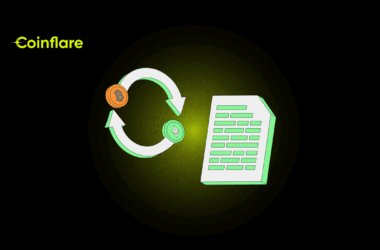Catalogue - Key Takeaways Show

Leverage is a cornerstone concept in derivative trading, that offers traders the ability to control larger positions with a relatively smaller amount of capital. While leverage refers to magnification of potential profits, it also introduces heightened risks. In this article, we will explore how leverage functions in derivative trading, the benefits, drawbacks and essential risk management practices.
Understanding Leverage
Leverage allows traders to amplify their exposure to an underlying asset without needing to commit the full value of the position. It enables traders to control a larger notional value of assets than their available capital would typically allow. Leverage is expressed as a ratio, such as 10:1, indicating that for every unit of trader’s capital, they can control ten units of that underlying asset.
In derivatives trading, leverage is often provided by the broker or exchange. It allows traders to enter larger positions with a smaller fraction of total contract value as collateral, known as margin. Leverage enables traders to capitalize on even small price movements of underlying asset, potentially leading to substantial profits.
Benefits of Leverage
Enhanced Profit Potential:
Leverage enables traders to amplify their gains by controlling more significant positions than they could with their available capital. A small price movement in underlying assets can result in a substantial percentage return on the trader’s initial investment.
Diversification:
Leverage allows traders to diversify their portfolio and exposure across multiple assets even if a trader has limited capital. Hence, diversification allows to help spread risk and therefore potentially leading to stable returns.
Access to Larger Markets
Leverage allows traders with limited funds to access the crypto market, they might not have otherwise been able to participate in, such as commodities, forex or cryptocurrencies.
Drawbacks and Risks of Leverage
Increased Losses
While leverage can amplify profits, they can also multiply losses. A small adverse price movement can lead to significant losses, potentially exceeding the trader’s initial margin deposit.
Margin Calls and Liquidation
As the market moves against a leveraged position, the trader’s margin may fall below a certain threshold, leading to a margin call. If the trader cannot add additional funds to meet the margin requirements, their position might get liquidated, resulting in substantial losses.
Market Volatility
Leverage exposes traders to heightened risks during times of market volatility. Sudden and unpredictable price swings can lead to rapid and significant losses.
Risk Management in Leverage Trading
Given the potential for both substantial gains and ultimate devastating losses, effective risk management is a paramount when trading leverage. Here are some essential risk management practices for leverage trading:
Position Sizing
Carefully determine the appropriate and desired position size based on the available capital, risk tolerance, and market conditions. Avoid committing a significant portion of your capital to a single trade.
Stop Loss Orders
Always set stop loss orders to limit potential losses. These orders automatically close a position when the price reaches a specific level, thus preventing further losses beyond a predetermined threshold.
Diversification
While leverage can provide access to various markets, avoid overconcentration in a single asset or market. Diversifying your positions can help mitigate impact of losses in a specific trade.
Risk Reward Ratio
Before a trader enters into the trade, assess potential risk versus reward. A favorable risk-reward ratio ensures that potential losses are smaller than potential gains.
Continuous Monitoring
Stay vigilant, and monitor your positions regularly. Market conditions can change rapidly, and adjustments may be necessary to protect your capital in financial markets.
Educate Yourself
Understand the mechanics of leverage, margin requirements, and the specific rules and policies of the platform you are trading on. Lack of knowledge can lead to costly mistakes.
Limit Exposure
Avoid excessive leverage, especially if you are new to trading. While high leverage can magnify profits, it also magnifies the risks. Start with lower leverage ratios and gradually increase as you gain experience.
Conclusion
Leverage is a powerful tool in derivative contracts and trading that can possibly lead to substantial profits and gains. But, it comes with inherent risks which demand a disciplined and cautious approach. Traders should prioritize risk management practices, such as prudent position sizing, setting stop loss orders, diversification and continuous monitoring. By understanding the benefits and drawbacks of leverage and implementing effective risk management strategies, traders can harness its potential while safeguarding their capital from excessive losses. As with any particular trading endeavor, education, preparation, and a comprehensive understanding of leverage are essential for successful and everlasting trading in derivative contracts for making sound and safe investment decisions.
FAQs
Do Derivatives Use Leverage?
Yes, derivatives often employ leverage, and allow traders to control large part of their positions, with a smaller amount of capital.
What Are the 4 Main Types of Derivatives?
The four main types of derivative contracts are the futures contracts, swaps, options and forwards. These are most renowned and popular derivative contracts in the market.
What is Leverage and Hedging?
Leverage involves the borrowing to enhance and magnify trading positions, whereas hedging aims to offset potential losses.
Does Leverage Increase Profit?
Absolutely yes, leverage involves trading at high “X” base multiples. If at one place it increases profits on the other hand it increases losses too while making risk management is a crucial step in perpetual trading and derivative trading.
About Coinflare
Coinflare is a cryptocurrency exchange platform that offers traders a secure, easy-to-use, and convenient way to buy, sell and trade cryptocurrencies. Our platform has been designed with investors of all levels in mind, whether they are just starting out or experienced traders. We offer various features and tools to help users make the best trading decisions possible, including advanced charting and analytics, real-time market data, and various customisable trading interfaces. At Coinflare, we are dedicated to empowering our users and helping them reach their financial goals.
Stay in the loop about our launches, trading pair announcements, contests and more by following us on Discord, Telegram, and Twitter.









